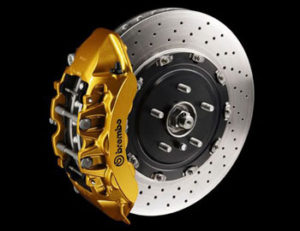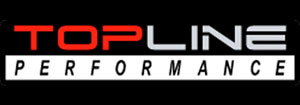AUTO BRAKE REPAIR SERVICE
We proudly serve all of
Orange County, CA
- Huntington Beach
- Newport Beach
- Garden Grove
- Fountain Valley
- Santa Ana
- Westminster
- Seal Beach
- Irvine
- Long Beach
- Tustin
- Buena Park
- Stanton
 Modern cars have brakes on all four wheels, operated by a hydraulic system. The brakes may be disc type or drum type.
Modern cars have brakes on all four wheels, operated by a hydraulic system. The brakes may be disc type or drum type.
The front auto brakes play a greater part in stopping the car than the rear ones because braking throws the car weight forward on to the front wheels.
Many cars, therefore, have disc brakes, which are generally more efficient, at the front and drum brakes at the rear.
All-disc braking systems are used on some expensive or high-performance cars and all-drum systems on some older or smaller cars.
Power-Assisted Auto Brakes
Many cars also have power assistance to reduce the effort needed to apply the brakes. Usually, the source of power is the pressure difference between the partial vacuum in the inlet manifold and the outside air. The servo unit that provides the assistance has a pipe connection to the inlet manifold. A direct-acting servo is fitted between the brake pedal and the master cylinder. The brake pedal pushes a rod that in turn pushes the master-cylinder piston. But the brake pedal also works on a set of air valves, and there is a large rubber diaphragm connected to the master-cylinder piston. When the automotive brakes are off, both sides of the diaphragm are exposed to the vacuum from the manifold. Pressing the brake pedal closes the valve linking the rear side of the diaphragm to the manifold, and opens a valve that lets in air from outside. The higher pressure of the outside air forces the diaphragm forward to push on the master-cylinder piston and thereby assists the braking effort. If the pedal is then held and pressed no further, the air valve admits no more air from outside, so the pressure on the brakes remains the same. When the pedal is released, the space behind the diaphragm is reopened to the manifold, so the pressure drops and the diaphragm falls back. If the vacuum fails because the engine stops, for example, the brakes still work because there is a normal mechanical link between the pedal and the master cylinder. But much more force must be exerted on the brake pedal to apply them.
Some cars have an indirect-acting servo fitted in the hydraulic lines between the master cylinder and the brakes. Such a unit can be mounted anywhere in the engine compartment instead of having to be directly in front of the pedal. It, too, relies on manifold vacuum to provide the boost. Pressing the brake pedal causes hydraulic pressure build up from the master cylinder, a valve opens and that triggers the vacuum servo. Bring your car into TopLine Performance today in Huntington Beach, for auto brake repair service!
Auto Brake Hydralics
A hydraulic car brake circuit has fluid-filled master and slave cylinders connected by pipes. When you push the brake pedal it depresses a piston in the master cylinder, forcing fluid along the pipe. The fluid travels to slave cylinders at each wheel and fills them, forcing pistons out to apply the car brakes. Fluid pressure distributes itself evenly around the system. The combined surface ‘pushing’ area of all the slave pistons is much greater than that of the piston in the master cylinder. Consequently, the master piston has to travel several inches to move the slave pistons the fraction of an inch it takes to apply the brakes.
This arrangement allows a great force to be exerted by the brakes, in the same way, that a long-handled lever can easily lift a heavy object a short distance. Most modern cars are fitted with twin hydraulic circuits, with two master cylinders in tandem, in case one should fail. Sometimes one circuit works the auto front brakes and one the rear brakes, or each circuit works both front brakes and one of the rear brakes, or one circuit works all four brakes and the other the front ones only. Under heavy braking, so much weight may come off the rear wheels that they lock, possibly causing a dangerous skid. For this reason, the rear brakes are deliberately made less powerful than the front.
Most cars now also have a load-sensitive pressure-limiting valve. It closes when heavy braking raises the hydraulic pressure to a level that might cause the rear brakes to lock and prevents any further movement of fluid to them. Advanced cars may even have complex anti-lock systems that sense in various ways how the car is decelerating and whether any wheels are locking. Such systems apply and release the brakes in rapid succession to stop them locking.

